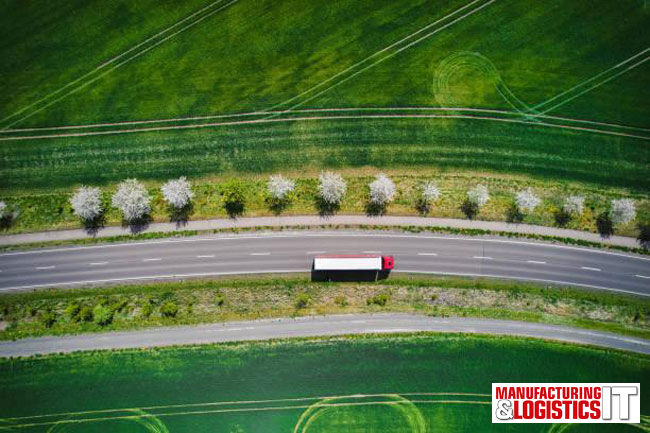By James Humphreys, specialist at Katana ERP
Businesses are placing more emphasis on reducing their environmental impact and embracing ethical responsibility. Supply chain sustainability is a critical component of this effort. In this article, we’ll explore the importance of sustainability and examine how companies are integrating it into their supply chains.
With the planet facing more frequent and severe natural disasters, it’s becoming increasingly clear that our current manufacturing supply chain practices are not sustainable. The effects of climate change, such as droughts, floods, and storms, interrupt supply chains across the globe, while manufacturing itself is largely to blame for these catastrophes. According to the EPA, the industrial sector (including manufacturing) made up 23% of total greenhouse gas emissions in the United States in 2021.
However, there are steps that companies and individuals can take to improve supply chain sustainability and mitigate the risks of climate disasters. This means taking a hard look at current systems, and what we can do to minimise the negative effects on the planet.
What is supply chain sustainability?
The sustainability of a supply chain is crucial in promoting environmentally and socially responsible practices.
It involves ensuring that companies prioritise the welfare of the planet and people while producing the goods that we enjoy. It is a collaborative effort where companies choose suppliers who share their values and employ ethical methods. For instance, a clothing company may opt for a cotton supplier that uses organic farming methods, which avoids harmful chemicals and conserves water.
A major factor of sustainability is reducing waste and pollution.
One solution is implementing a closed-loop system where a company recycles and reuses its own materials to reduce manufacturing waste and minimise the need for new resources. A tech manufacturer can recycle old electronics to make new products instead of sending them to landfill. Plastic bottles are often gathered after use and remelted into new containers.
Finally, it is crucial to ensure that every stakeholder is treated fairly, enjoys the experience, and stays safe. A fair and safe supply chain operates with transparency, integrity, and respect for everyone’s rights. It ensures workers are treated fairly, get a living wage, and have safe working conditions.
How to make your supply chain more sustainable?
Making your supply chain more sustainable can involve a range of strategies and actions that aim to reduce the environmental and social impacts of your operations. Here are some steps you can take.
1. Assess your current supply chain
Start by mapping out your supply chain and analysing the environmental and social impact of each stage. Identify areas of improvement and prioritise actions based on their potential impact and practicality.
2. Set sustainability goals
Establish measurable objectives and targets for reducing your environmental impact and improving social responsibility. Consider using established frameworks such as the UN Sustainable Development Goals or GRI Standards to guide your goal-setting process.
3. Engage with suppliers
Work closely with your suppliers to promote sustainable practices throughout the supply chain. Encourage them to adopt eco-friendly and socially responsible policies and practices. Consider establishing a supplier code of conduct that outlines your expectations and standards.
4. Reduce waste and emissions
Implement measures to reduce manufacturing waste and greenhouse gas emissions in your supply chain. This often means using more efficient transportation methods, minimising packaging, or investing in renewable energy sources.
5. Adopt circular economy principles
Consider adopting circular economy principles that aim to keep resources in use for as long as possible and minimise waste. This could involve using renewable materials, designing products for disassembly, or implementing recycling programs.
6. Ensure compliance with regulations
Stay up to date with relevant environmental and labour regulations and ensure that your operations and suppliers stick to them. Conduct audits and adopt third-party certifications to verify compliance.
7. Monitor and report on progress
Regularly monitor your progress towards your sustainability goals and report on your performance to stakeholders. Use data and metrics to track your impact and identify areas for improvement.
What are the business benefits of a sustainable supply chain?
A sustainable supply chain can benefit your business, the environment, and society. Here are some key advantages.
1. Reduced costs
Adopting sustainable practices such as waste reduction, energy efficiency, and responsible sourcing can help reduce manufacturing costs in the long run. For example, reducing packaging and transportation can lower shipping costs, while energy-efficient manufacturing can save on electricity bills.
2. Improved brand reputation
A sustainable supply chain can enhance your brand reputation and help you differentiate yourself from competitors. Consumers are increasingly conscious of sustainability issues and are more prone to supporting brands that prioritise responsible practices.
3. Increased customer loyalty
You can build stronger relationships with customers who share your values by demonstrating your commitment to sustainability. This can lead to an increase in customer loyalty and repeat business.
4. Mitigated risks
A sustainable supply chain can help you reduce risks associated with environmental and social issues such as climate change, resource scarcity, and labour abuses. By proactively addressing these issues, you can avoid legal, financial, and reputational risks.
5. Enhanced innovation
Adopting sustainable practices can spur innovation and creativity within your organisation. By challenging traditional business methods, you can identify new opportunities and develop innovative products and services.
From raw materials extraction to product disposal — every stage of the supply chain can potentially harm the environment. However, with sustainable practices, businesses can reduce their ecological impact and protect the planet for future generations.



